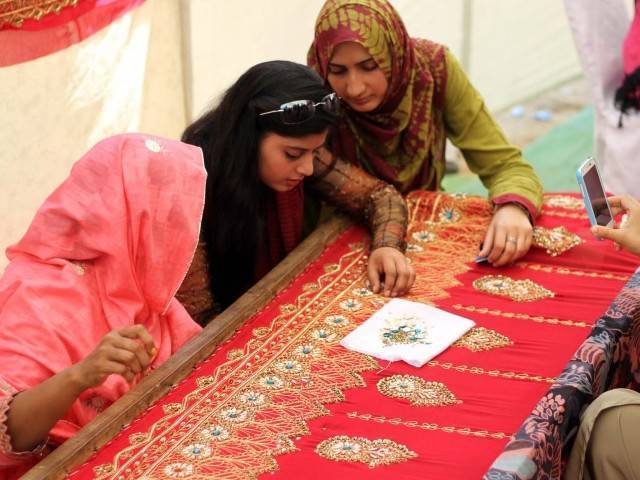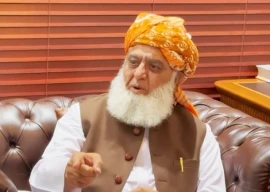
In an exclusive interview with The Express Tribune, Cautain said that Pakistan, with a very young population, has the opportunity to grow its industry and mitigate the risks of socioeconomic problems that arise out of unemployment.
"The solution is in technical and vocational education and training and Pakistan could learn from the experiences of the EU."
The EU has been a partner of the government of Pakistan for introducing reforms since April 2011 under TVET Sector Support Programmes (SSP). The programme assists the government of Pakistan in the implementation of the TVET sector reforms. It is funded by the EU, the Federal Republic of Germany and the Royal Norwegian Embassy. He stated the initiative was being implemented by GIZ, in close collaboration with National Vocational and Technical Training Commission (NAVTTC), Technical Education and Vocational Training Authorities (TEVTAs) and a number of organisations from the public and private sectors across Pakistan.
The programme has entered its second phase after the completion of the first in 2016.
According to data gathered by the Pakistan TVET Reform Support Programme, around three million young people enter the labour market every year and 53% of them are female. However, the formal TVET system can only accommodate fewer than 0.5 million trainees annually.
As a result, a huge percentage of youth drifts into the informal sector where they get involved in “ustad-shagird” (master-apprentice) vocational training. Furthermore, the employability rate of graduates from the formal TVET system is very low due to the lack of quality and relevance of the training content.
The gap between demand and supply of skilled workforce is due to limited cooperation between the public and the private sector in TVET planning, governance and delivery. As a consequence, the workforce produced lacks the skills needed in the market.
"Now, we are in the second phase in which we are still supporting Pakistan's apex body on TVET; the NAVTTC. We are supporting our partners to make sure that TVET sector provides people with the right skills, according to the needs of the industry in Pakistan."
The envoy said that after the first phase, one of the main issues was the mismatch between the skills provided by TVET institutes and the needs of the market. "So the challenge now is to make sure that there are solid linkages between the needs of the industry and what the TVET sector is producing in terms of skills."
Ambassador Cautain said that public-private partnership is not that strong in Pakistan. “Currently, the public sector provides most of the funding for the TVET sector with the help of partners like EU, Australia and others. At one stage, the industry will have to realise that getting more involved in the TVET sector is for its own good. Looking at the size of the population of Pakistan, there is a need to train the youth. Clearly, public funding with international cooperation will not be enough."
Another thing Pakistan needs to work on is creating coordination between the federal TVET setup – NAVTTC and provincial TEVTAs. He said that a lot had been done in terms of putting in place a framework from a legislative point of view.
"We need to make sure NAVTTC plays its role with different TEVTAs. From our observations, we see a disconnect from time to time at the federal and provincial levels," he added.
Cautain also believed that Pakistan's industry needs to adapt to the changing economic situation in the world. He said that during his recent visits, he observed disparity in modes of production. "I noticed that some were using very basic, labour-intensive techniques to produce textiles, whereas others were using automation and robotic methods."
According to Cautain, the same applied to the TVET sector which needed to figure out the changing landscape and adjust accordingly.
"What is important is to make sure that the TVET sector recognises the evolving needs of the industry. Then, it has to make sure that it is in line with the evolving needs of the industry as well as the economy."
Published in The Express Tribune, February 1st, 2018.
1724760612-0/Untitled-design-(12)1724760612-0-405x300.webp)
















COMMENTS
Comments are moderated and generally will be posted if they are on-topic and not abusive.
For more information, please see our Comments FAQ